
With that in mind, I’d like to introduce you this week to Abigail (Abby) Merrick, the victim in the book. She was born and raised in Southern California, and she looks and sometimes acts the part of a SoCal girl.
When her husband Jace is transferred to Fort Huachuca Army base for his Intelligence training, she insists on moving also. Jace is confined to the Fort for 17 weeks, so Abby moves in with Rumor Vargas, her roommate from college, who has a working ranch in nearby Bisbee.

Abby’s wealthy parents were both killed two years ago, and she received a large inheritance, so she is financially independent.
At Rumor’s urging, Abby begins to work as a volunteer at Hope House, an organization that provides water and provisions at stash sites for illegals crossing the Mexican border into the United States.
Abby is shot and killed While working at the stash site, which is situated in a remote area known for both human and drug smuggling by Mexico’s notorious Sinaloan Cartel.
Did she inadvertently surprise some drug mules on their delivery route into Tucson or Phoenix? Did her husband carry out his plan to get rid of her?
Or did someone else want Abby dead?
Hundreds of thousands of immigrants like the ones depicted in my book have tried to cross illegally into the United States over the past several years, even as the government threatens to build a wall and step up investments in manpower and technology to secure the nation's borders.
For those who make it across the border, it isn't an easy journey. Thousands of would-be immigrants have died in the desert of southern Arizona in the past 10 years, according to the Pima County Medical Examiner's Office. Most of them die after suffering dehydration in the summer or fall to hypothermia in the winter.
"People are still driven by economic necessity to come to the United States by whatever means they can. Some come to join family members already here, others because they are hungry," said Isabel Garcia, a public defender and a co-chair of the Tucson, Arizona-based Coalition for Human Rights.
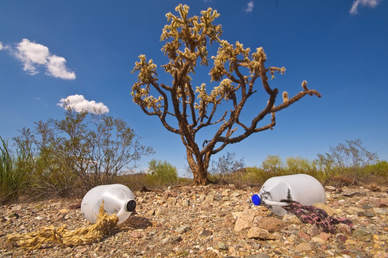
The trek can often last days, as smugglers take them through remote paths in order to avoid detection by the Border Patrol. Wild animals roam the area at night and the people the migrants paid to get them safely across often turn on them, robbing them of their money and abusing the women before abandoning them, according to authorities.
Just like Naco, the border town I feature in Crescent Moon Crossing, most Mexican border towns, have a Grupo Beta office; it’s the Mexican federal agency that helps those newly deported from the United States and other migrants find food, shelter or a way home. “Don’t put yourself or your family in danger,” blares a poster on one wall. “Putting your children in the hands of coyotes or polleros is like abandoning them in the desert,” warns another.
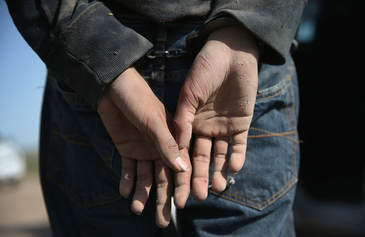
Take Santiago Rivera Diaz, who sits with two other youths, waiting for a ride to a shelter, like Hope House in my story, where he’ll be fed and given a cot for the night. His left arm is in a sling, his left leg heavily bandaged. His wispy beard makes him look younger than his 20 years.
Rivera, who’s from Oaxaca, says he crossed the border two weeks earlier, north of the town of Altar, with two other men and four young women. Their guide collected $500 from each of them. Then he ditched them in the desert. After three days without food or water, they were nearing a major highway (Rivera couldn’t name it, but his description matches I-19), when they were confronted by a group of five armed men — what the Border Patrol calls a “rip” crew — robbers who target drug smugglers and migrants.
“Two of the girls ran away,” says Rivera in a low voice. “We tried to stop them, but they beat us until we played dead. We were hurt, but we made our way to the highway and La Migra came up. They held us three days. Then they brought me here two days ago.”
He says he has no idea what happened to any of the others he was with. Reyes had hoped to find work so he could send money home to his family, who grows corn. But now he’s headed back to Oaxaca.
"Many fall into the abuses of the smugglers, sexual abuse," said Manuel Padilla, head of the Border Patrol's Tucson sector. "The only thing that matters to them is money, not people."
Padilla said Border Patrol agents often spot and rescue immigrants stranded in the desert, which is an important part of the agency's job. However, the agency also focuses on prevention, by educating would-be immigrants of the dangers involved in trying to cross the border illegally.
They ask foreign diplomats at consulates in the United States to spread the word in their countries about the dangers of illegal border crossings, and they try to get the word out in Spanish-language media, Padilla said.
Some make it past the desert and go on to find jobs in the United States. But on the Mexican side of the border, deportations from the United States have become so common that shelters and businesses have opened up, catering to people who've gotten kicked out of the United States.
Others come back bruised, robbed by smugglers or worse, says Hilda Irene Loureiro, a Mexican merchant who runs a shelter.
According to the Pima County Medical Examiner's Office, in 2012 the bodies of 157 migrants were recovered in the desert. In 2013, the remains of 169 people were found there.
"Since 2001 we've had around 2,200 immigrant deaths," most of them Mexican citizens, said Gregory Hess, the Pima County medical examiner. "When we find only a bone in the desert, a femur ... or an arm, it's not here for long... we take photographs and measurements and DNA" samples.
Unclaimed bodies and bones are buried or cremated after about a year, he said.
Searching for clues
Since a majority of the bodies belong to Mexican citizens, morgue staff are in regular contact with the Mexican Consulate in Tucson.
It isn't the job Jeronimo Garcia thought he was signing up for when he joined the Mexican Foreign Service. But now he's become so used to handling human remains that he no longer feels the need to wear a surgical mask to protect himself from the stench of death.
The consulate employee has become a go-to person for American authorities when it comes to finding clues about the immigrants' identities.
Garcia has earned the trust of U.S. officials because of his track record over the past 12 years, helping to identify dozens of bodies.
"(This one) has dental work. Sometimes teeth give us clues as to where they come from," Garcia said as he examined cadavers and bones at the Pima County morgue. "Central Americans, particularly Guatemalans, often have ornamental work done. They put copper stars on their teeth."
Migrants sometimes sew documents into their underclothes, or conceal strips of paper with the telephone number of a contact in the United States or their country of origin, he says. This information can be a solid clue to track down identity.
After the extensive search at the morgue, the bodies are labeled and stored in a freezer. Personal effects and identifications are also stored, as any clue could lead to the identification of a cadaver.
Sometimes, there aren't many clues. If all that Garcia and the medical examiner's office have to go on is a set of dry bones, DNA testing is the only viable option.
The Mexican Consulate sometimes pays for the tests when Mexican citizens are involved.
For immigrants from other countries, the medical examiner's office relies on its growing ties with the New York-based Argentine Forensic Anthropology Team.
The organization, which started out trying to identify remains of dissidents killed during Argentina's brutal military dictatorship, now has also collected more than 1,700 DNA samples from families in Mexico, El Salvador, Honduras, Costa Rica and Guatemala in efforts to help find missing migrants. So far, they've identified 65 bodies.
"This is never a happy ending. ... We just try to reduce the time that families have to prolong their pain," said Mercedes Doretti, who directs the organization. "What it means is ending the uncertainty of the family not knowing what happened to their relative, the suffering that everyone goes through."
At the Yuma port of entry, a line of traffic going north, most with Sonora plates, backs up at the Sentri lane for “trusted travelers” who’ve passed a security check. Customs officers are searching an SUV. They soon find tightly wrapped bundles of heroin in the wheel wells, and take the young, well-dressed woman into custody.
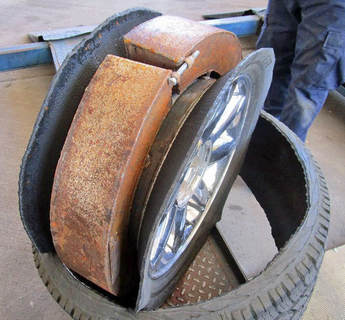
Legal ports of entry are where most heroin, cocaine and methamphetamine seizures are made, Border Patrol officers say. In one week in mid-March, officers made five seizures at Arizona ports of entry totaling 148 pounds of cocaine, 90 pounds of meth, and 9 pounds of heroin.
But, by volume, marijuana dwarfs everything else. One day last spring, Nogales border officers seized a 1-ton shipment of pot in a tractor-trailer of bell peppers; the next day, they arrested another tractor-trailer driver with 6,219 pounds of marijuana in boxes labeled as vacuum pumps and lamp holders.
The Tucson sector is the main marijuana corridor from Mexico, accounting for 44 percent of all Border Patrol marijuana seizures across the entire Southwest border last fiscal year. Border Patrol agents in the Tucson sector seized more than 1 million pounds of pot.
Nor has border security dented traffic in guns headed south. Over the past five years, CBP (Customs Border Patrol) officers have seized, on average, fewer than 2,000 weapons a year presumably headed to the criminal groups sending the drugs north. That represents less than 1 percent of the estimated 252,000 weapons that are bought in the United States and smuggled south each year, according to a recent economic study by the University of San Diego’s Transborder Institute and the Igarapé Institute, based in Brazil.
“This is an issue that has been studiously ignored by the media,” said Topher MacDougal, one of the authors of the study. He calls for strong background checks, banning cash purchases of guns along the border and tougher criminal penalties for “straw” buyers — people with clean records who buy guns on behalf of those who wouldn’t pass background checks.
I hope you have enjoyed my blogs on the characters and topics in Crescent Moon Crossing during NaNovember. Please consider signing up as a Beta Reader.
As always, thank you for your support!
See you next week with the first of my blogs on Yule.
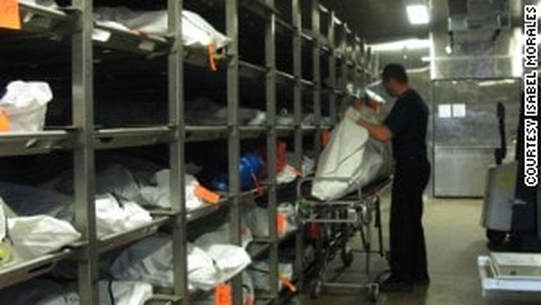
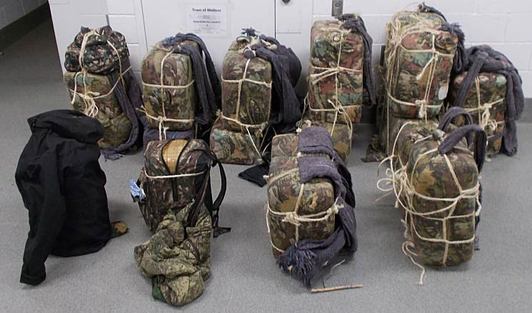
 RSS Feed
RSS Feed
